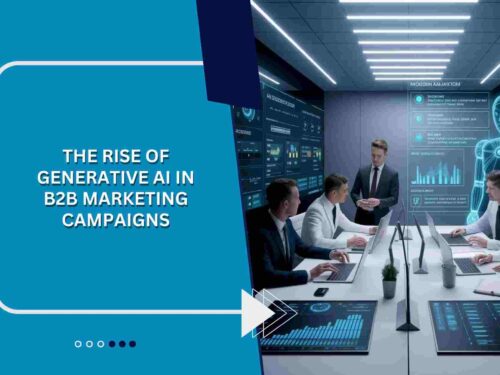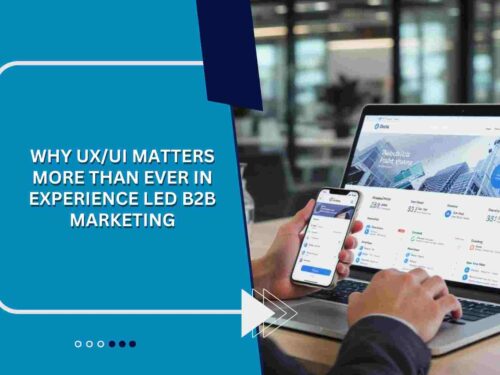In today’s fast-paced and digitally-driven market, B2B Sales Prospecting has become a foundational part of every successful sales strategy. Whether you’re a seasoned sales professional or a startup founder, mastering B2B prospecting can mean the difference between a stagnant pipeline and a thriving, revenue-generating one.
Businesses that prioritize B2B sales prospecting consistently outperform those that rely solely on inbound leads. With buyers becoming more informed and competition increasing, taking a proactive approach to identifying and connecting with potential clients is essential. But to do that effectively, it’s crucial to understand the key elements of B2B prospecting, who the prospects are, and what methods yield the highest engagement.
What is B2B Prospecting?
B2B prospecting is the process of identifying, researching, and reaching out to businesses or decision-makers who may be interested in purchasing your product or service. Unlike inbound leads who come to you, prospects are proactively sourced through direct outreach efforts.
In the B2B space, prospecting involves more strategic planning than traditional B2C outreach. The focus is on targeting companies that match your ideal customer profile (ICP), qualifying leads based on industry, company size, buying potential, and decision-making authority, and then moving them into the sales funnel through personalized engagement.
B2B Sales Prospecting is not just about cold calls it’s a multichannel effort involving email, social media, webinars, events, and value-driven conversations that nurture trust.
Who are B2B Prospects?
B2B prospects are potential business clients that fit the profile of companies likely to benefit from your product or service. They could be individuals in various roles CEOs, marketing managers, IT heads, procurement officers depending on the product or service being sold.
The key to identifying strong B2B prospects lies in targeting companies that:
- Match your ideal customer profile (based on size, revenue, industry)
- Show behavioral intent (visiting your website, attending your webinar)
- Use competing or complementary products
- Are undergoing changes (hiring, funding, rebranding) that create a need for your solution
Segmenting prospects based on relevance and readiness can significantly improve the efficiency and ROI of your B2B Sales Prospecting strategy.
Why is B2B Prospecting Important?
Without consistent and strategic B2B prospecting, sales teams often struggle with an inconsistent lead flow. The importance of B2B Sales Prospecting lies in its ability to:
- Fill your sales pipeline consistently
- Reduce dependency on inbound leads
- Identify high-value target accounts
- Shorten sales cycles through better qualification
- Boost conversion rates with personalized outreach
In 2025, sales teams are facing more challenges than ever longer decision cycles, more stakeholders involved, and growing noise in digital channels. Prospecting gives you control over your pipeline by allowing you to choose who you engage, when, and how.
What are the Top B2B Prospecting Strategies?
To engage with B2B prospects effectively, it’s important to use a blend of traditional and digital tactics. Here are ten proven B2B Sales Prospecting methods that work in 2025:
1. LinkedIn Outreach
LinkedIn remains the #1 social platform for B2B networking. Use advanced search filters to find decision-makers in your target industries. Personalized connection requests followed by meaningful engagement (comments, messages, content shares) can warm up cold prospects.
LinkedIn Sales Navigator enhances your ability to track job changes, company growth, and buying intent perfect for high-impact B2B Sales Prospecting.
2. Cold Emailing
Cold emails, when done right, still deliver strong results. Focus on writing concise, personalized emails that offer immediate value. Use tools like Hunter.io or Apollo to find verified emails and automate sequences.
A/B testing subject lines, call-to-action buttons, and messaging tone can help improve open and response rates.
3. Intent Data Targeting
Intent data allows sales teams to identify companies that are actively researching solutions like yours. By targeting accounts showing high buying intent, you can reach them at the right time in their journey.
Platforms like Bombora and ZoomInfo offer robust intent data integrations for smarter B2B Sales Prospecting.
4. Warm Calling
While cold calling may be fading, warm calling reaching out after some prior interaction is far more effective. If a prospect visited your website, attended a webinar, or downloaded a guide, that’s a cue to initiate a call.
Always lead with relevance and reference the activity that triggered your outreach.
5. Webinars and Virtual Events
Hosting educational webinars positions your brand as a thought leader and allows you to collect high-intent leads. Use follow-up strategies to engage attendees with personalized insights, summaries, or product walkthroughs.
Prospecting from webinar participants ensures you’re reaching out to people already interested in your topic or solution.
6. Content-Led Outreach
Content is a powerful magnet. Create and distribute high-value content such as whitepapers, case studies, or market research. Then reach out to leads who engaged with that content.
Tailor your message based on the content they viewed or downloaded to keep the conversation relevant.
7. Account-Based Marketing (ABM)
ABM aligns marketing and sales efforts to target high-value accounts with personalized messaging. Identify key accounts, research their pain points, and develop campaigns specifically designed for them.
When combined with B2B Sales Prospecting, ABM can increase deal sizes and shorten sales cycles.
8. CRM and Database Mining
Often, your best prospects already exist in your CRM or email list. Revisit dormant leads, lost opportunities, or contacts from past events. Refresh your messaging and re-engage them with new offers or product updates.
Database hygiene is crucial keep contact data current and segment based on updated criteria.
9. Referrals and Networking
Word-of-mouth is powerful in B2B. Ask satisfied customers and partners for referrals. Attend industry networking events and trade shows to build relationships with potential prospects in person.
Referrals tend to convert faster and with higher trust levels compared to cold outreach.
10. Chatbot Qualification
Integrate AI-powered chatbots on your website to capture and qualify leads in real time. These bots can answer questions, schedule demos, or route leads to the right rep based on their responses.
A well-programmed chatbot works 24/7 and significantly enhances B2B Sales Prospecting efficiency.
Optimizing B2B Prospecting for 2025 and Beyond
As buyer behavior evolves, so must your prospecting strategies. Sales teams that rely solely on traditional methods risk losing ground to competitors leveraging tech-driven approaches. The future of B2B Sales Prospecting is a hybrid one combining automation with human insight, personalization with scale, and data with empathy.
Using modern tools like CRM platforms, prospecting automation software, and intent-data solutions can streamline your efforts. But technology alone isn’t enough. Successful prospecting requires creativity, persistence, and a deep understanding of your prospect’s industry, challenges, and goals.
Personalization will remain the cornerstone of engagement. Prospects can easily spot mass-produced messages. Winning their attention in 2025 means crafting outreach that resonates on a business and personal level. To scale your pipeline with high-quality leads and performance-driven demand generation strategies, visit Acceligize




